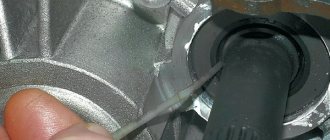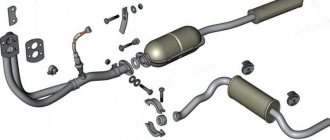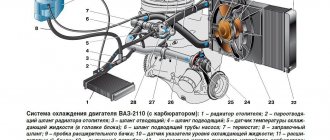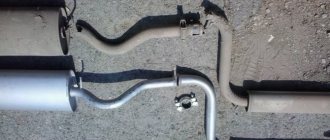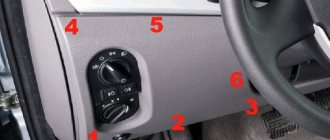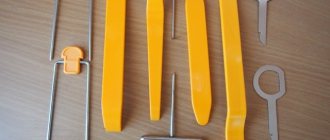Crankcase VENTILATION SYSTEM
The power plant of any car is a very complex device, including mechanisms and systems that interact with each other. At the same time, the engine is not a closed hermetically sealed circuit and it also has ventilation. Crankcase ventilation is a scheme that ensures the removal of gases from internal cavities. The fact is that during combustion of the working mixture in the cylinders, exhaust gases are formed, which are under pressure, due to which part of them penetrates into the sub-piston space - the crankcase, where it mixes with oil mist and moisture formed as a result of condensation. This whole mixture is called crankcase gases. If the engine were sealed, with an increase in the amount of gases in the crankcase, the pressure inside it also increased. Because of this, a breakthrough of gases along with oil through the breather, oil seals, seals or the hole in the oil dipstick is possible. Based on this, it follows that the main task of the ventilation system is to maintain pressure inside the engine and prevent it from exceeding the permissible norm by removing crankcase gases.
Why does oil squeeze out through the breather: how to fix the problem
A fairly common problem on many domestic and foreign-made cars is that oil flows through the breather. In winter, especially with the onset of significant cold weather, you can encounter a malfunction when the breather freezes, oil is squeezed out and streaks are visible on the outer surface of the power unit. Let us immediately note that this symptom, as well as smoke and oil from the breather, are a reason for immediate engine diagnostics, since ignoring this problem can lead to quick and expensive engine repairs.
Note that if there is oil coming through the breather, diagnosing the root cause may be difficult. To accurately determine the underlying problem, skills, special equipment, etc. will be required. However, in some cases, the driver can understand why oil is leaking from the breather without the involvement of third-party specialists. In other words, diagnostics are carried out independently in a garage environment. In this article we will talk about why oil drips from the breather, as well as what a car owner should do if oil comes out through the breather.
Article: 2112-1014056more, additional articles: 2112-1014056Rhide
Order code: 006580
In stock Available for order – >10 pcs. Data updated: 03/05/2021 at 09:30
Order code
006580 Articles 2112-1014056, 2112-1014056Р Manufacturer BRT Catalog group: ..Engine Engine Width, m: 0.14 Height, m: 0.08 Length, m: 0.31 Weight, kg: 0.199
Reviews of the product
Where is it used?
Certificates
Reviews
There are no reviews for this product yet.
Write a review
Articles about the product
- “Crystal” VAZs: Lada Granta and Lada Largus April 9, 2013 Today in the next article in the series “Crystal” VAZs or typical breakdowns of domestic cars” we will talk about the latest developments of the Volzhsky Automobile Plant: Lada Granta and Lada Largus. Let's talk about the history of the creation of these models, as well as their characteristic malfunctions.
- Hose VAZ-2112 crankcase ventilation BRT Article: 2112-1014056, 2112-1014056R Order code: 006580 165 ₽ or place an order by calling 8 800 6006 966
Availability of goods in warehouses and stores, as well as the price of the goods is indicated on
05.03.2021 09:30
.
Prices and availability of goods in all stores and warehouses are updated once an hour.
If there is a sufficient quantity of goods in the store you need, you can buy it without pre-ordering. Internet price
– valid when ordering on the website or through a call center operator by phone
8-800-600-69-66
. Subject to sufficient quantity of goods at the time of order.
Price in stores
– retail price of goods in store sales areas without pre-order.
The period for moving goods from a remote warehouse to the warehouse of an online store.
The parts data presented on this page is for informational purposes only.
f7ad54cc3f4c9d22ebf73def085b6441
Add to cart
Available to order:
Order quantity:
Product successfully added to cart
!
Operating principle of SVKG
Car engines have a ring gas exhaust system. The resulting gases as a result of the combustion of diesel fuel, gasoline or liquefied gas are not released into the environment, but are returned to the engine, where they are re-burned. The second end of the crankcase ventilation hose is attached to the intake manifold, with the help of which gases again enter the cylinder chamber for combustion. A significant part of the gases, when re-entered, ignite at the moment the fuel ignites, and the remaining ones are released into the atmosphere using the exhaust system. A small percentage of the gases are sent back into the cylinder chamber for re-combustion. This process is ongoing.
VENTILATION DESIGN FEATURES, OPERATING PRINCIPLE
The simplest diagram of the crankcase ventilation system used on internal combustion engines previously consisted of only one fitting - a breather installed in the crankcase. This breather connected the internal cavity of the cylinder block with the external environment, and crankcase gases simply escaped through it into the atmosphere. But this scheme had one significant drawback - the exhaust gases contained oil particles, which also entered the external environment. And this is not only loss of lubricant and the need for periodic refilling, but also air pollution. On modern cars the ventilation system is closed. It also has a breather, but a pipe is connected to it, allowing gases to be vented into the intake manifold or air filter housing, from where they enter the cylinders and burn. That is, the atmosphere is not polluted by them. Additionally, the system includes elements that ensure oil separation and return back to the crankcase so that it does not enter the cylinders along with the gases.
There are several options for oil separators, and on cars from different manufacturers they may differ in design and operating principle. It is worth noting that part of the exhaust gases enters the supra-valve space, and they must also be removed. Therefore, the entire circuit of the engine ventilation system on a modern car consists of a breather, an oil separator and two pipes. Additionally, a special valve can be included in the system to regulate the pressure of gases entering the intake manifold. The configuration of the system can be very different, but this does not change its purpose and operating principle. For example, consider the ventilation design of the VAZ-2110. At the bottom of the cylinder block of this car there is a breather, onto which a pipe is attached; the second end of this hose is connected through a fitting to the cylinder head cover. At the same time, an oil separator is located inside this cover at the inlet of the pipe. On its other side there is another fitting, to which a tube is connected that goes to the air inlet pipe.
The principle of operation of such ventilation is simple - gases enter the cylinder head cover space through the breather and pass through the oil separator, while the separated oil flows to the valve assembly. After this, the gases are mixed with those that have broken into the supra-valve space and are supplied to the air pipe, and then to the manifold. There is no pressure regulating valve in this car. On other machines, the oil separator may be located immediately next to the breather, and a valve is installed behind it.
SVKG device in Lada Priora
In all brands of cars, the SVKG is built on a similar principle. Only small details differ. On the upper side of the crankcase there is an oil separator, which looks like a hollow plug. An oil deflector is placed under the plug, which is designed to clean the gases from the crankcase as much as possible from oil particles. The oil separator has an outlet for the crankcase ventilation hose.
In order for the gases to return to the cylinder chamber, a ventilation valve is placed along their path. The valve has three modes, which allows you to maintain a certain level of gas rarefaction in the crankcase.
While the engine is idling, gases move through a small circuit hose through a special passage hole in the throttle assembly. At this time, a high vacuum is created in the intake hose, which allows crankcase gases to be effectively sucked out of the throttle block. The passage hole in the throttle regulates the amount of gases that are sucked out.
SIGNS OF OIL RUTTER.
There are not many of them. In a carburetor engine, these may be leaks of lubricant inside the air filter housing and significant traces of oil on the filter element itself.
As for injection engines, the problem manifests itself in the form of deposits on the throttle body and the internal surfaces of the intake manifold. In this case, there may be a drop in engine power and an increase in fuel consumption.
Signs and causes of oil leaking through the breather
Despite its simplicity, this system is very important, and it is necessary to monitor its performance. One of the most common ventilation problems is oil leaking through the breather.
This can become a serious problem in the future, since oil particles entering the manifold and cylinders will clog the channels, and during combustion, increase the amount of soot, which will then enter the crankcase, coking the oil channels, and impairing the operation of the lubrication system.
Signs of oil rut.
There are not many of them. In a carburetor engine, these may be leaks of lubricant inside the air filter housing and significant traces of oil on the filter element itself.
As for injection engines, the problem manifests itself in the form of deposits on the throttle body and the internal surfaces of the intake manifold.
In this case, there may be a drop in engine power and an increase in fuel consumption.
Reasons for oil ejection through the breather.
But there are many of them, and many of them do not relate to ventilation.
Lubricant may flow through this system due to:
- Severe wear of the piston rings and the cylinder-piston group as a whole. Because of this, a very large amount of gases break into the crankcase, and the ventilation simply does not have time to remove them all. Therefore, increased pressure is formed inside the engine, which squeezes oil into the breather;
- Oil separator drain channel is clogged. In this case, the separated oil has nowhere to go, and it is mixed into the passing gases;
- Air filter dirty. The engine sucks in a large amount of air, and if there is not enough air due to a clogged element, the motor will suck it in along with oil from the ventilation system;
- Increased amount of oil in the system. If there is more lubricant in the engine than normal, then excess lubricant will enter the ventilation;
- Ventilation system valve jamming;
- Timing belt wear or valve burnout. As a result, crankcase gases enter the above-valve space, then they penetrate into the crankcase, significantly increasing the pressure.
INSPECTION AND CLEANING OF THE VENTILATION SYSTEM
On the VAZ-2110 this is done like this:
1. Disconnect the pipes from the breather, valve cover, air pipe and check the degree of clogging. If necessary, they can be washed in gasoline or kerosene and then dried;
2. Unscrew the nuts securing the valve cover and remove it. On the inside there are two bolts securing the oil separator roof, which must be unscrewed;
3. Remove the unscrewed cap and remove the oil separator.
It is a package of special plates that can be disassembled, washed each plate separately, assembled back and put back in place.
Since the design of the system may be different on other cars, it is performed somewhat differently. But this does not change the essence of the work - all elements are removed and washed. As for the exhaust gas control valve, which can be installed in the ventilation system, assessing the degree of contamination and cleaning it is not difficult.
It is removed, the stroke of its rod is checked, and if it jams, then the valve is simply washed in gasoline, dried and put back in place. This is all maintenance work on the crankcase ventilation system. They are not difficult to perform, and every car enthusiast can do it. Finally, we note that it is recommended to clean the ventilation every time the oil is changed.
How to replace the pump
Replacing a part will require you to spend a lot of time, so set aside a few free hours, say, on a weekend. The work consists of several main stages. Let's look at the procedure step by step.
- Basic procedures: disconnecting the negative battery, draining the oil.
- Removing the timing belt.
- Disconnecting the wiring harness from the crankshaft position sensor, removing the pulley.
- Removing the key and removing the protection.
- Twisting the fasteners and removing the clutch housing cover.
- Removing the crankcase.
- Removing the crankcase gasket.
- Removing the oil receiver.
- Twisting the oil pump fasteners.
That's all, actually. Assembly work is carried out in reverse order. During the work, try to replace consumables. First of all, we are talking about the crankcase gasket. Install the new part and seal it, having first cleaned the mating surface of dirt and old sealant. At the same time, you can clean the oil receiver. For this you will need white spirit. If the part cannot be cleaned, it will have to be replaced.
This must be done, as there is a risk of ignition of the lubricant. The next element to be inspected and replaced is the oil receiver seal. If the ring breaks or loses its elasticity, you need to install a new part.
How to Remove the Valve Cover on a Priora 16 Valves Video
How to remove the valve cover on a Priora 1.6 16kl
https://www.donationalerts.ru/c/melkiy_nikalek to support the project, a homemade snowmobile, with a Lifan engine, at least 15 hp.
Removing the cylinder head of a VAZ 2112 16 valves
The Auto_Repair channel will help you troubleshoot your car yourself.
how to fix oil getting into the spark plug wells of a vase
Thank you so much for watching my videos, tell your friends, leave comments and subscribe.
Priora repair. VAZ 21126. How to remove the cylinder head from the engine. How to remove the cylinder head from the engine
When you remove the cylinder head for the first time from a car whose engine has never been disassembled before.
installation of cylinder head VAZ 2112 -16 valves
The Auto_Repair channel will help you troubleshoot your car yourself.
How to remove the Cylinder Head of Lada Priora! Part 1. In detail! How to remove the cylinder head
Lada_priora #cylinder head #Ivanova #engine_repair The main symptoms that the cylinder head will have to be dismantled.
Replacing the timing belt and rollers on Priora 16-valve Kalina and Grant
Video review on replacing the timing belt on Lada Priora cars with 1.6 16-cl engines, Lada Granta, and Kalina.
removing the VAZ 16 valve ramp without removing the manifold
The Auto_Repair channel will help you troubleshoot your car yourself.
replacing timing belt 16 valves VAZ 2110-2112
The Auto_Repair channel will help you troubleshoot your car yourself.
Replacing the timing belt and pump with your own hands - nuances on Priora! Timing marks VAZ 2170, 2171,2172!
Replacing the timing belt and pump on a Priora! Do-it-yourself timing marks in street conditions from and to the nuances of VAZ 2170, 2171,2172!
Replacing the timing belt on Lada Priora 21126 2013 LADA Priora
Thank you for watching and for subscribing, all the best to you.
How to clean the valve cover (breather mesh) of a VAZ
Subscribe to the group on VK https://vk.com/public120461485 Instagram https://www.instagram.com/nik86_youtube/
Replacement of timing belt and pump 16kl.! Timing marks 16kl. VAZ 2110,2112,2111
Replacing the timing belt on a Priora! Timing marks VAZ 2170, 2171,2172! https://www.youtube.com/watch?v=T3DOAWfKt_k This video shows the work.
How to remove and wash injectors on a sixteen-valve VAZ 2110 engine. Cleaning the injector
Lada Kalina, Priora. How to remove the intake manifold without removing the engine on a 126 engine (16 valves)
We encountered difficulty in removing the receiver manifold on a 126 Priora motor, but found a way to do it, no.
Broken timing belt on Priora 21126 head repair.
Bent valve on Priora 21126 DIY repair. Thank you for watching and for subscribing, all the best to you.
How to quickly and correctly remove and install the Generator from Priora Lux
Diagnostics and repair of timing belt. Timing marks. VAZ (LADA) 16v
Do-it-yourself diagnostics and repair of timing belt of 16 valve VAZ engines. The video shows methods for finding faults.
oil in the air filter and bellows cause and solution
The Auto_Repair channel will help you troubleshoot your car yourself.
How to identify a faulty coil on a 16 valve engine
The video is aimed more at car owners rather than mechanics. A simple lifehack by definition of a malfunction.
Oil in the intake of Priora (problem 21126)
If you are not satisfied with the price of OSAGO, correct KBM - discount on OSAGO up to 50% FIX KBM HERE https://osago-kbm.blogspot.ru/p/bl.
Priors cylinder head analysis, part 2
Replacing the timing belt and rollers on 16 valve VAZ 2110, 2111 and 2112
How to replace the timing belt and rollers on a 16-cl. VAZ 2110, 2111, 2112 cars with engines 2112 and 21124. https://remont-vaz2110.r.
Differences 16th grade. VAZ engines detailed review
The review includes engines 2112-1.5 family ten, 21124-1.6 family ten, 21126-1.6 Priora/2114, 11194-1.4 viburnum. Differences.
Replacing valve cover gasket Daewoo Nexia 16v
https://avto.pro - auto parts for foreign cars without intermediaries. Greetings, dear car lovers, you are watching.
How to remove, disassemble and reassemble the starter on a Priora!
Detailed video report on disassembling and assembling a gear starter for VAZ cars! Removal and installation of retractors.
Repair of VAZ 2110. Replacement of cylinder head gasket, etc.
Communication, commercial inquiries: Channel assistance: PrivatBank 5168 7556 3188 1725, WMZ Z318291300563, WMU.
How to replace the LV without removing the generator on a Priora Luxury with air conditioning (voltage regulator)
Subscribe to the channel – https://www.youtube.com/user/TechBoyRus?sub_confirmation=1.
How to remove the VAZ crankshaft gear if it cannot be removed! How to remove gear crankshaft.
VAZ #2109 #21083 #Ivanova When replacing the crankshaft oil seal, which is located behind the Crankshaft gear, on a car.
Timing marks 16kl. VAZ! Checking timing marks on a VAZ
Timing marks 16kl. VAZ 2110, 2111, 2112. IF YOU CARRY OUT WORK ON THE VAZ 2112 1.5I 16cl ENGINE. or from 16kl. engine on.
HOW TO REMOVE THE TRANSMISSION OF VAZ 2110 2111 2112
How to fix an oil leak on a v16 engine
High-quality used spare parts for Daewoo – avtolanos.com.ua.
How to remove the crankshaft gear if it cannot be removed!
The need to replace the crankshaft oil seal or remove the oil pump requires first removing the gear.
The steering rack on a Priora is knocking - how to tighten it?!
Detailed video review of tightening the steering rack on a Lada Priora car. How to determine what is knocking.
Replacing the front crankshaft oil seal VAZ 21099, VAZ 2109, VAZ 2108
The video shows the process of replacing the front crankshaft oil seal of a VAZ 21099. At the same time, the timing belt was replaced (code 2108-100604.
Replacing the brushes of a VAZ 2112 generator without removing the generator
Well, there you are. LIKE AND DON'T FORGET TO SUBSCRIBE)) Brotherly My Instagram: https://www.instagram.com/sasha_058 We are changing.
How to check the thermostat? On VAZ 2110-2115 and 2170-2172-Priora.
How to check the thermostat? On VAZ 2110-2115 and 2170-2172-Priora. In this video I conduct an experiment on what temperature.
Replacing hydraulic lifters Hyundai Accent
In this video I show the process of replacing the ever-clacking hydraulic valves on a Hyundai Accent (TagAZ). Tools: ordinary.
Oil pump VAZ, INSTALLATION, Oil pump VAZ, INSTALLATION.
VAZ2109 #sealant #ingarage Video on how to properly install the VAZ front-wheel drive oil pump! Video.
How to remove the Cylinder Head of Lada Priora! Part 2. Details!How to remove the cylinder head
The main symptoms that you will have to dismantle the cylinder head will be an oil leak that is observed in the area.
REPLACEMENT OF THE TIMING GAME ON THE LADA VESTA LADA VESTA. REASON FOR THE BEND OF THE VALVES.
DISCOUNT ON AUTO PARTS shop motorring.ru promo KAIGRAVE: https://motorring.ru/?utm_source=kaigrave YouTube channel of the car shop.
That's how VAZ valves knock
The Auto_Repair channel will help you troubleshoot your car yourself.
REPAIR OF GEARBOX VAZ 2110,2111,2112,2114,2170,1118.
VAZ, gearbox, repair, VAZ 2110, 2112, 2110, gearbox, VAZ timing belt, VAZ clutch, VAZ repair, VAZ 2109, auto show (event), box.
VAZ 2112 stove replacement
Replacing the generator on VAZ 2110-2112 and 2114-2115
Video instructions for removing and installing a generator on VAZ 2110-2115 cars with your own hands. Description also.
Air in the Kalina cooling system - expansion tank cap needs to be replaced!
One of the reasons why the cooling system on Kalina may become airy is because the stove will be damaged.
ENGINES VAZ 21124 and VAZ 2112 16 VALVE MAIN DIFFERENCES
VAZ 2112 and VAZ 21124 What are the main differences between 16 valve engines. What are the differences between VAZ 2112 or 21124 16v engines. Diff.
Replacing the generator bearing
Replacing the front generator bearing on a Chery Tiggo with a Mitsubishi 4G64 2.4 and 4G63 2.0 engine. Bearing number – 6303.
Replacing the thermostat on a VAZ 2114.
In this video I will tell you how to change the thermostat on a VAZ 2114 with your own hands. Similar to Priors, Kalinas, and Grants.
